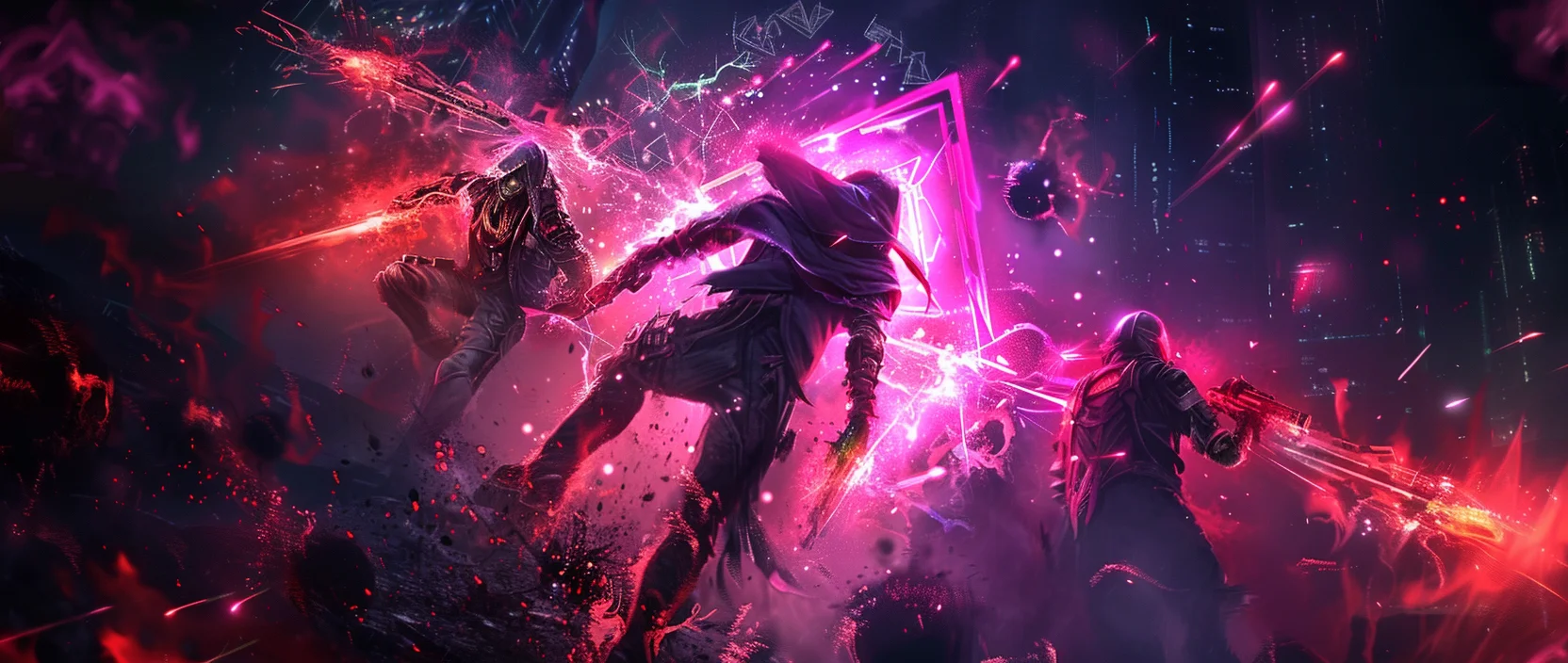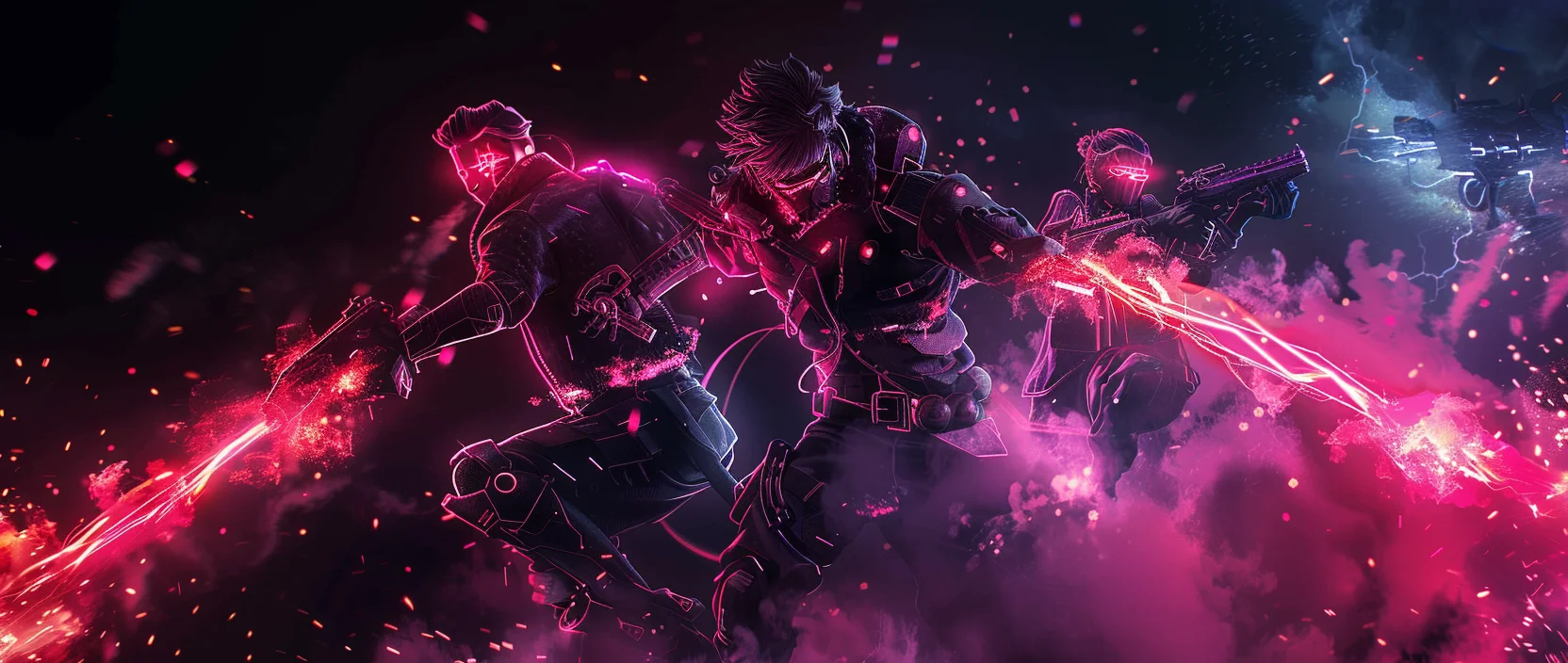In the rapidly evolving world of blockchain games, NeonRealms Studios is redefining the arcade PvP genre with its debut project, Kabumi. This game blends fast-paced 2–4 player battles, Web3 mechanics like NFT access passes and skill-based economic matches, all wrapped in a vibrant, anime-inspired aesthetic. Let's explore what sets Kabumi apart and how its core features are implemented.
Table of Contents
- About Kabumi
- Game Design and Core Mechanics
- Web3 Integration and In-Game Economy
- Technical Architecture and Security
- Community and Studio Vision
- Conclusion

1. About Kabumi
NeonRealms Studios is a young game development studio focused on building engaging Web3-powered worlds. Kabumi is its debut release, built on values of honest, accessible, and enjoyable gameplay. Set in a stylized, anime-inspired universe, Kabumi offers lightning-fast PvP battles where players strategically deploy bombs and tricks to eliminate opponents.
The primary goal is simple: be the last one standing by using tactical skills and precise timing. The game’s colorful and smooth visual style appeals to casual players and fans of quick, action-packed sessions. NeonRealms positions Kabumi as a bridge between Web2 familiarity and Web3 innovation, merging fast gameplay with a next-generation economy.
Kabumi strikes a balance between competitive arcade action and blockchain integration. NFT bombs, in-game currency, and skill-based paid matches create a strong foundation for a play-to-earn model without sacrificing fairness or depth. Its low entry barrier and strategic complexity make it appealing to both crypto natives and traditional gamers alike.
2. Game Design and Core Mechanics
The gameplay of Kabumi is designed for intuitive controls and deep strategy. Each match is a short yet intense battle involving 2–4 players. While easy to pick up, the game rewards strategic planning, spatial control, and sharp reflexes, making it accessible for beginners but rewarding for competitive players.
Key gameplay features include:
- Bombs and Spatial Control — Players drop bombs to block paths and trap opponents. Controlling the arena becomes essential for survival.
- Timing and Strategy — Victory depends on predicting opponent movements and choosing the right moment to strike or dodge.
- Map Variety — Each arena has unique layouts, including obstacles, tight corridors, and interactive elements that require tactical adaptation.
- Game Modes — From casual duels to competitive matches with USDC stakes, Kabumi caters to both fun and financially rewarding gameplay.
This blend of fast action and thoughtful tactics creates an engaging loop—from instant excitement to deep mastery. Thanks to its short sessions and accessible mechanics, Kabumi is perfect for on-the-go gaming, while its map diversity and skill-based progression keep experienced players coming back.
3. Web3 Integration and In-Game Economy
Kabumi's Web3 integration is not superficial — it's purposefully designed to enhance gameplay. At the core of its economy are NFT bombs, unique digital assets that unlock access to prize-based matches. Developers emphasize that these NFTs offer gameplay utility, not just speculative value. Only 10,000 will be minted, with the initial drop scheduled for August 3, making them scarce and potentially valuable.
Key elements of Kabumi’s economic system:
| Element | Description |
|---|---|
| NFT Passes (Bombs) | Unique assets that grant access to matches with real prizes. They serve a functional purpose in gameplay. |
| Paid Matches | Matches that require entry via USDC or NFT. Winners are rewarded based on skill. |
| Marketplace | Players can freely buy, sell, or trade NFT assets with others. |
| Economic Transparency | All smart contracts are open-source and available via the official Gitbook for community audit. |
This structure creates a meaningful link between gameplay and digital ownership. Players don’t just collect NFTs — they use them in real-time battles, where outcomes depend on skill, not chance. Kabumi’s economy is grounded in real assets (USDC and limited NFTs), offering a stable and transparent system closer to traditional market principles.
In this sense, Web3 integration is not a gimmick but a well-implemented foundation where in-game performance directly affects player earnings — without compromising game balance or enjoyment.

4. Technical Architecture and Security
NeonRealms emphasizes Kabumi’s technological reliability and transparency, which are essential in the Web3 environment. According to the Gitbook, the project is built on modern Layer-2 blockchain solutions that enable high speed, low fees, and decentralized data storage. This design ensures players experience a seamless and fair game regardless of network load.
Technical highlights include:
- Layer-2 Blockchain — Enables fast, low-cost transactions, improving accessibility and efficiency in real-time gameplay.
- Modular Architecture — Game logic, client interface, and NFT catalog are separated for easier updates and scaling.
- Open Smart Contracts — All code and token details are public and verifiable through the project’s Gitbook.
- Standards Compliance — NFTs follow ERC-721 and ERC-1155 standards for full compatibility with Web3 platforms.
This robust technical framework shows NeonRealms’ commitment to building long-term infrastructure. Unlike short-lived crypto projects, Kabumi is engineered for scalability, third-party integration, and user trust. Its open and resilient design is a strong foundation for sustainable success in the Web3 space.
5. Community and Studio Vision
On their official X (Twitter) account, NeonRealms states that Kabumi is just the beginning of a broader vision to build immersive digital worlds. The project is a launchpad for future games, new mechanics, and evolving ecosystems. The studio is already fostering an active community via Discord and Twitter, regularly sharing updates, sneak peeks, and early participation opportunities.
The first NFT bomb drop is scheduled for August 3, unlocking access to competitive prize matches. The team also plans to host regular tournaments, add new gameplay modes, introduce more arenas, and support cooperative formats. Simultaneously, they’re working on partnerships with marketplaces and other Web3 platforms to expand Kabumi’s reach and functionality.
The game has already gained traction in the Web3 community, praised for its visual style, competitive gameplay, and transparent economic model. Kabumi is emerging as a symbol of the new era of skill-based blockchain arcades — where performance, not luck, determines success.
6. Conclusion
NeonRealms Studios is paving the way for arcade-style blockchain games—offering simple yet vibrant gameplay where strategy and engagement matter more than the number of NFTs you hold. Kabumi strikes a rare balance between accessibility for a broad audience and deep economic mechanics for Web3 enthusiasts. The dialogue between Web2 and Web3 continues, and this game is another bold step forward.
The project shows how dynamic gameplay, visual aesthetics, and decentralized technology can be seamlessly combined without compromising the player experience. What matters here is not just the outcome, but the process—where the player feels in control and finds purpose in every move.
Community support, thoughtful architecture, a transparent economy, and open smart contracts make Kabumi a strong contender in the multiplayer PvP arcade genre powered by digital assets. Keep an eye on the upcoming release, take part in the NFT drop, and join the explosive battles—NeonRealms is just getting started.





